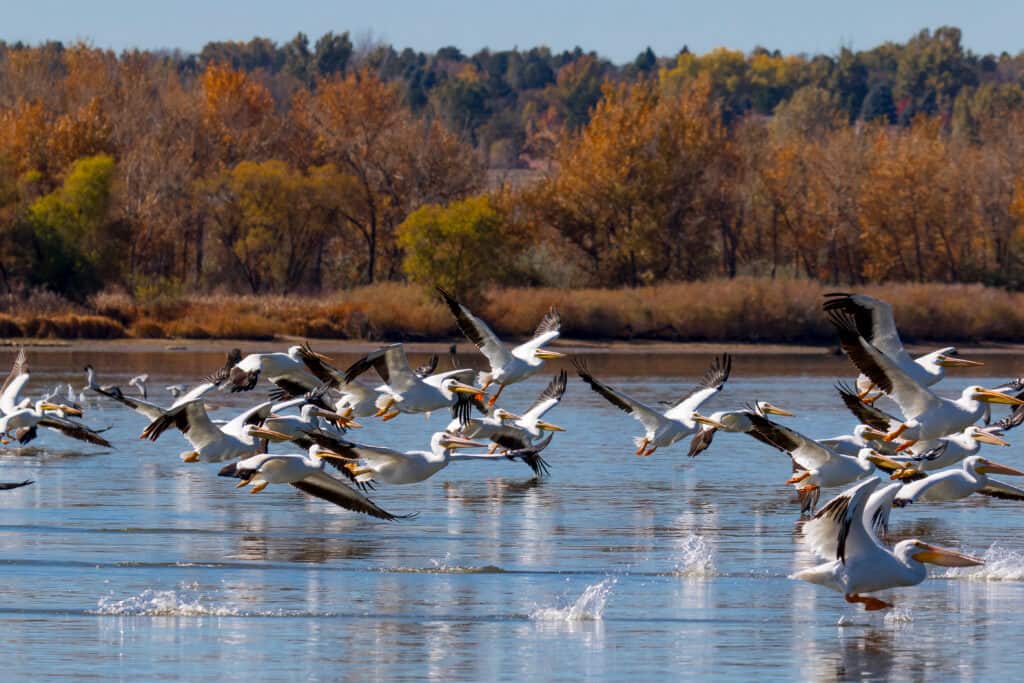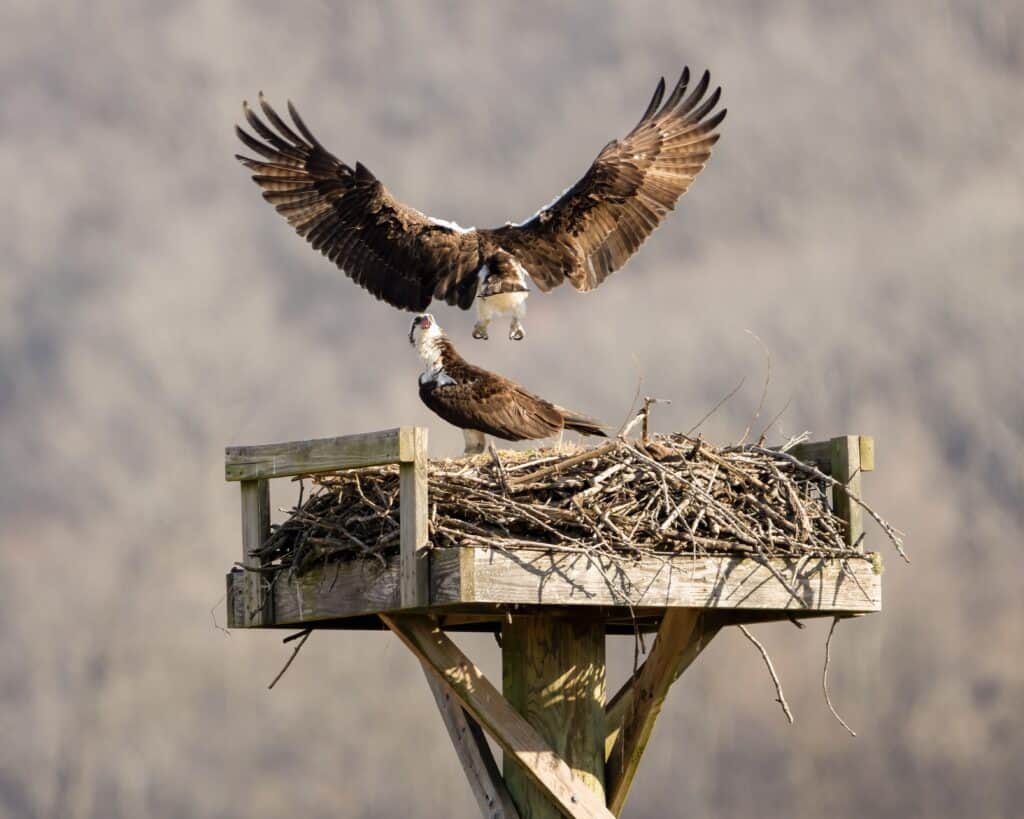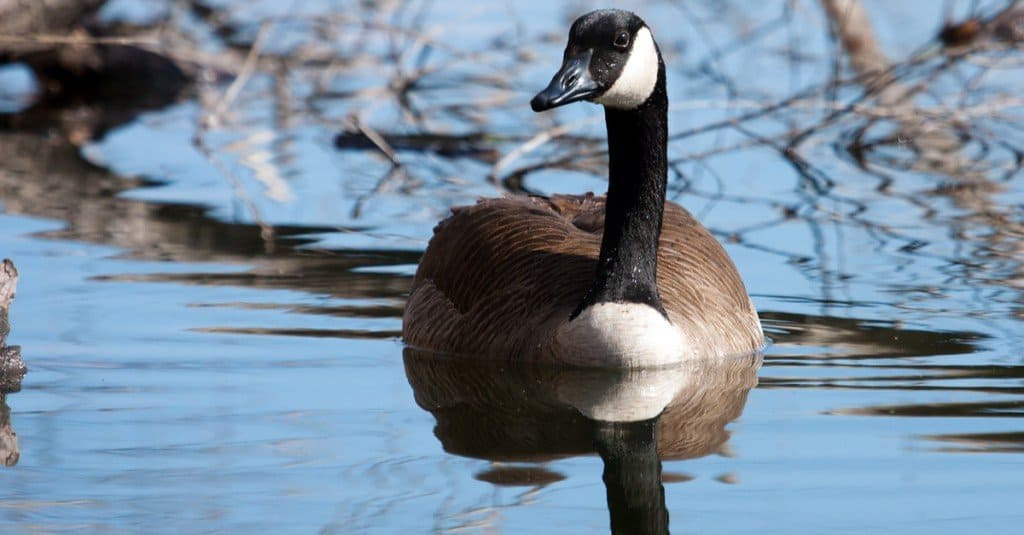Tennessee is famous for its delicious food and great music but that’s not the only reason to visit. If you’re interested in bird watching, Tennessee is the perfect place to stop and see some really amazing birds. Read on to learn more about the different types of birds you can find in Tennessee and the best places to find them!
1. Ensley Bottoms Complex
Size: 1,138 acres
Number of bird species spotted: 316
Birds to spot: American white pelicans, wading birds, raptors, terns, gulls, northern bobwhite, dickcissel, black-necked stilts, loggerhead shrike, painted bunting, western kingbird, scissor-tailed flycatcher, and Mississippi Kite
The Ensley Bottoms Complex, also known as “The Pits”, consists of sludge treatment ponds, fields where sludge is dried, agricultural plots and fields, and some industrial areas. It also has grasslands, lakes, fields, and bottomland forests. This location is known as one of the most important sites for shorebirds in Tennessee and the southeast in general.
Some of the birds you can find here at the Ensley Bottoms Complex include waterfowl like geese, swans, and ducks (which can be found by the thousands. There are also many American white pelicans, wading birds, raptors, terns, and gulls that can be spotted during their migration. During the summer you have the chance to spot the northern bobwhite, dickcissel, black-necked stilts, loggerhead shrike, painted bunting, western kingbird, scissor-tailed flycatcher, and the Mississippi Kite. Some birds that are year-round are the black-bellied whistling duck and the loggerhead shrike.
These are only a few of the different types of bird species that can be found here. There are over 300 different species documented so far! There are even a few rare birds that you might want to try your hand at spotting. Those include the sharp-tailed sandpiper, rough-legged hawk, and the fulvous whistling duck.

Visitors to Ensley Bottoms Complex Can Spot Pelicans.
©Images by Dr. Alan Lipkin/Shutterstock.com
©Images by Dr. Alan Lipkin/Shutterstock.com
2. Tennessee National Wildlife Refuge
Size: 51,000 acres
Number of bird species spotted: 300+
Birds to spot: mallard, mourning dove, yellow-billed cuckoo, great blue heron, turkey vulture, bald eagle, red-billed woodpecker, red-eyed vireo, white-eyed vireo, American crow, king rail, least bittern, willow flycatcher, yellow-throated vireo, northern parula, indigo bunting, blackpoll warbler
Tennessee National Wildlife Refuge is located near Kentucky Lake in the northwestern part of Tennessee. The refuge consists of three units (Duck River, Big Sandy, and Busseltown) all along the Tennessee River. It was first established in 1945 as an area designated for migratory birds. It is currently managed by the U.S. Fish and Wildlife Service.
The site helps waterfowl by providing them with the food and protection that they need to survive. The habitats in the refuge provide the birds with crops like milo, corn, and winter wheat, which help provide the birds with the nutrients they need in order to help better sustain themselves over the winter until they return to their breeding grounds in the spring.
Some of the species of birds you can find here at the refuge include mallard, mourning dove, yellow-billed cuckoo, great blue heron, turkey vulture, bald eagle, red-billed woodpecker, red-eyed vireo, white-eyed vireo, American crow, king rail, least bittern, willow flycatcher, yellow-throated vireo, northern parula, indigo bunting, blackpoll warbler, and so many others. There are over 300 different bird species to spot here.

The 51,000 acre Tennessee wildlife refuge has over 300 bird species.
©anthony heflin/Shutterstock.com
©anthony heflin/Shutterstock.com
3. Cross Creeks National Wildlife Refuge
Size: 8,420 acres
Number of bird species spotted: 251
Birds to spot: tundra swan, snow goose, wood duck, green-winged teal, gadwall, redhead, mallard, northern pintail, canvasback, ring-necked duck, lesser scaup, ruddy duck, common goldeneye
The Cross creeks National Wildlife Refuge was first established in 1962. It was created after a huge area of land belonging to the Kentucky Woodlands National Wildlife Refuge was inundated to create Lake Barkley. The land is comprised of grassland, mixed woods, shrubs, wetland, lakes, rivers, and cliffs.
The refuge’s main mission is to provide feeding and shelter for migratory and wintering waterfowl. Some of the waterfowl you can find here include the tundra swan, snow goose, wood duck, green-winged teal, gadwall, redhead, mallard, northern pintail, canvasback, ring-necked duck, lesser scaup, ruddy duck, and common goldeneye.
Beyond waterfowl, there are many other types of birds that can be found here like the great blue heron, snowy egret, black vulture, and turkey vulture, making it a great place to spot a wide variety of birds.

Nesting Ospreys at the Cross Creeks national wildlife refuge.
©Wirestock Creators/Shutterstock.com
©Wirestock Creators/Shutterstock.com
4. Meeman-Shelby Forest State Park
Size: 12,539 acres
Number of bird species spotted: 250
Birds to spot: cerulean, hooded warblers, great egrets, yellow-crowned night-herons, Mississippi kites, ducks, gulls, and geese
The Meeman Shelby Forest State Park borders the Mississippi River north of Memphis Tennessee. Meeman-Shelby was designated as an important bird area in 2006 by The Audubon Society. The land consists of bottomland hardwoods, lakes, swamps, and upland forests. There are also plenty of trails throughout the park that will help make bird-watching much easier. Some of the birds that you can find here in the summertime include cerulean, hooded warblers, great egrets, yellow-crowned night-herons, Mississippi kites, and many, many others.
Even after the summer is over and into fall and winter, you can still find a great variety of birds throughout the park. In the winter, you can visit Poplar Tree Lake to have a chance at spotting some waterfowl. You can also visit the boat ramp and see ducks, gulls, and geese. Some birds that can be spotted year-round include woodpeckers, owls, and wild turkeys.
Beyond birding, there are so many other fun activities that can be done while here at the park. You can go paddling at Poplar Tree Lake (where you may spot some waterfowl), as well as rent kayaks, canoes, paddleboards, pedal boats, and tandem kayaks from the park. There is also hiking, biking, fishing, golfing, and even horseback riding. There are plenty of things to do at the Meeman-Shelby State Park for bird-watchers, and general outdoor enthusiasts.

Meeman-Shelby Forest State Park is over 12,000 acres with hundreds of bird species.
©Bonita R. Cheshier/Shutterstock.com
©Bonita R. Cheshier/Shutterstock.com
5. Eagle Lake Refuge
Size: 3,253 acres
Number of bird species spotted: 238
Birds to spot: Canada goose, wood duck, mourning dove, yellow-billed cuckoo, turkey vulture, sharp-shinned hawk, willow flycatcher, least flycatcher, veery, Philadelphia vireo, osprey, barred owl, gray-cheeked thrush
The Eagle Lake Refuge is another great place to stop and do some bird-watching. The site was acquired in 1992 and converted from a cotton farm. At first the land was primarily bottomland forest, then after 1970 the forest was cleared away and farmed. The main purpose of this area is to create an environment that waterfowl, and fall shorebirds can make their homes during their migration in the winter.
Some birds found at Eagle Lake refuge include the Canada goose, wood duck, mourning dove, yellow-billed cuckoo, turkey vulture, sharp-shinned hawk, willow flycatcher, least flycatcher, veery, Philadelphia vireo, osprey, barred owl, and the gray-cheeked thrush. During the summer, Mississippi kites can be seen and bald eagles fly throughout the refuge year-round. If you plan to come during the spring or the fall, you can have a chance at seeing the bluff hills. There are a wide variety of birds here to spot all throughout the year.
During the winter at Eagle Lake Refuge, the fields flood and provide the waterfowl with a place to rest and forage. It also becomes a place for shorebirds to find food and staging during migration. The marshy areas of the refuge become a place to spot rails. During the spring and fall shorebird migration numbers can be almost up to a thousand or higher, giving you many chances to spot some amazing birds.

Canadian Geese are easy to spot at Eagle Lake refuge.
©Joseph Scott Photography/Shutterstock.com
©Joseph Scott Photography/Shutterstock.com
Up Next
- Discover the Highest Point in Tennessee
- What Do Geese Eat?
- 12 Birds on the Appalachian Trail
- How and Where Do Birds Sleep? Everything You Need to Know
- 11 Must-See Birds In Tennessee
The photo featured at the top of this post is © Jeffry Weymier/Shutterstock.com
Sources
- Audubon, Available here: https://www.audubon.org/important-bird-areas/ensley-bottoms-complex
- Tennessee Birding Trail, Available here: https://www.tnbirdingtrail.org/traildetails.cfm?keyword=®ion=&speciesgroups=&season=&uid=12111009454182816
- U.S. Fish & Wildlife Service, Available here: https://www.fws.gov/refuge/tennessee/species
- U.S. Fish & Wildlife Service, Available here: https://www.fws.gov/refuge/cross-creeks
- U.S. Fish & Wildlife Service, Available here: https://www.fws.gov/sites/default/files/documents/CrossCreeksBirdList19%20%281%29.pdf
- Tennessee State Parks, Available here: https://tnstateparks.com/parks/activity-detail/meeman-shelby-forest-birding
- Audubon, Available here: https://www.audubon.org/important-bird-areas/eagle-lake-refuge
FAQs (Frequently Asked Questions)
What is the largest bird in Tennessee?
Eagles are some of the largest birds in the world and are the largest in Tennessee.
Can you find blue jays in Tennessee?
Yes, you can find blue jays year round in Tennessee.
What are the largest hawks in Tennessee?
In Tennessee, the largest hawks are the rough-legged hawks.
Thank you for reading! Have some feedback for us? Contact the AZ Animals editorial team.






